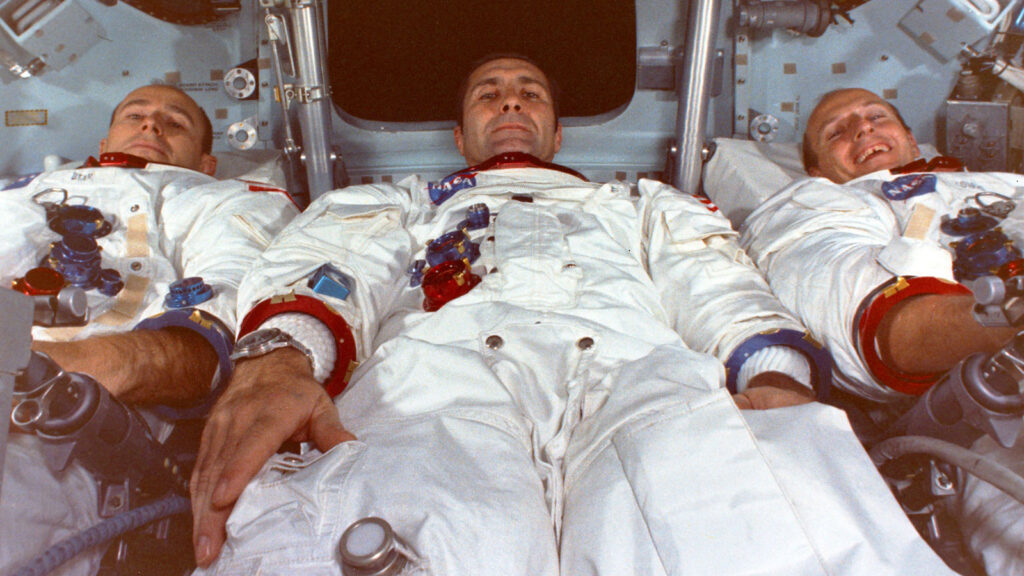In the crisp morning of November 14, 1969, the world witnessed another historic leap in the boundless realm of space exploration. Following the groundbreaking success of Apollo 11, the Apollo 12 mission soared from Kennedy Space Center with a three-man crew on board, marking a monumental stride in human interstellar endeavor.
The Event:
The crew of Apollo 12—Charles “Pete” Conrad, Richard F. Gordon, Jr., and Alan L. Bean—embarked on a scientific odyssey, aiming to further humanity’s grasp of lunar landscapes. Their mission was to extend the duration of lunar exploration, traverse greater distances, and collect an even larger cache of lunar rock than their predecessors, Neil Armstrong and Buzz Aldrin of the Apollo 11 mission.
The launch, however, wasn’t devoid of challenges. Within moments of liftoff, the spacecraft encountered two lightning strikes. Through the resourceful actions of the crew and ground control, the mission persevered and fulfilled its objectives.

Fascinating Facts for Kids:
- During their lunar explorations, the astronauts installed numerous scientific instruments on the moon’s surface. This included the innovative Apollo Lunar Surface Experiments Package (ALSEP), providing groundbreaking seismic data, a first from another celestial body.
- Bringing back a segment of Surveyor 3, an unmanned spacecraft that had landed on the moon in 1967, marked the sole instance to date where pieces of a probe sent from Earth were returned by astronauts.
- The mission’s insignia featured a clipper ship, symbolizing explorers. In line with this theme, the crew humorously christened their Lunar Module “Intrepid.”
Engaging Learning Activities for Kids:
- Moon Crater Lab: With simple ingredients like flour, cocoa powder, and marbles, children can simulate the lunar surface, creating their craters to understand the environmental challenges faced by Apollo 12 astronauts.
- Constructing Rockets: Kids can experiment with water and baking soda rockets or engage in building model rockets, fostering an inquisitive understanding of the science behind rocket launches.
- Apollo 12 Discussion: Encourage a group discussion or debate about the Apollo 12 mission’s pivotal role in the history of space exploration.
Conclusion:
The historic launch of the Apollo 12 mission on November 14, 1969, stood as a significant milestone in human space exploration. Overcoming the tumultuous odds at liftoff, the mission contributed profoundly to our comprehension of lunar geology, signaling our capacity to conquer adversities and explore frontiers beyond our own.
References:
1. Sydney, Paul. 1970. Journey to the Ocean of Storms. New York: Doubleday.
2. Chaikin, Andrew. 2007. A Man on the Moon: The Voyages of the Apollo Astronauts. London: Penguin.
3. NASA. Apollo 12 Mission Overview. https://www.nasa.gov/mission_pages/apollo/missions/apollo12.html (Accessed October 5, 2021).







What do you think?
Show comments / Leave a comment